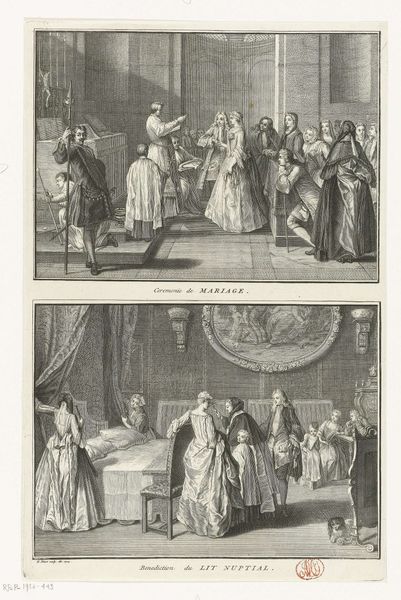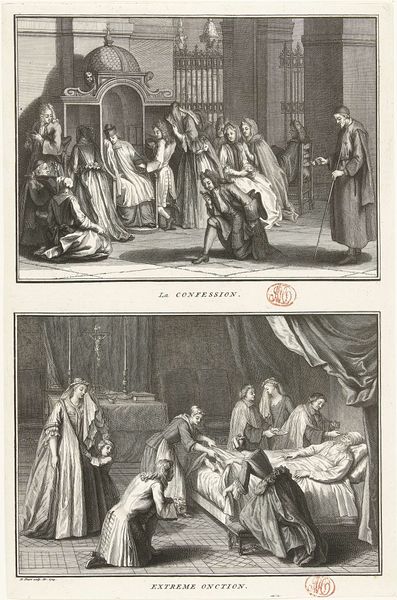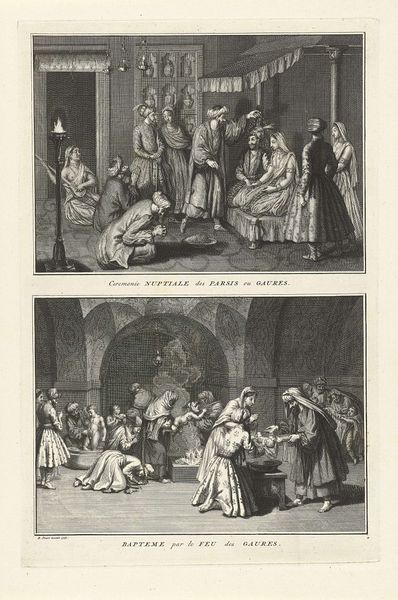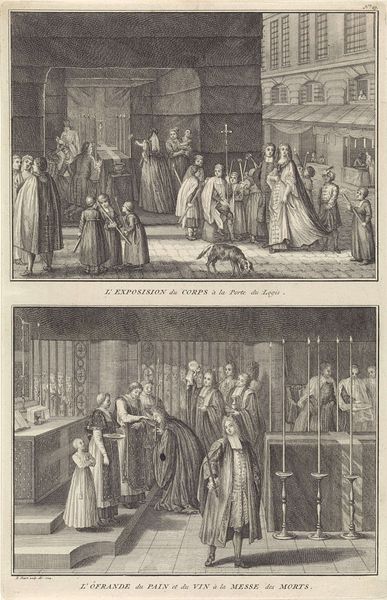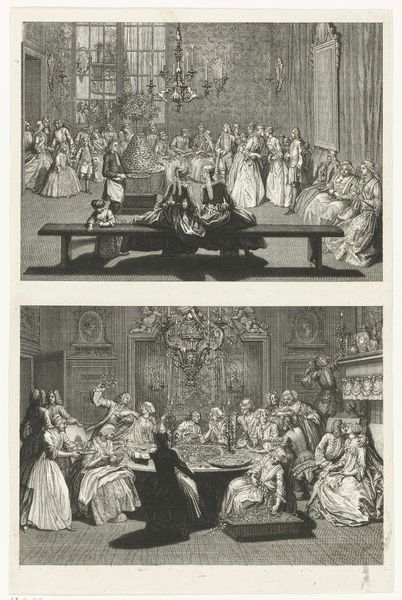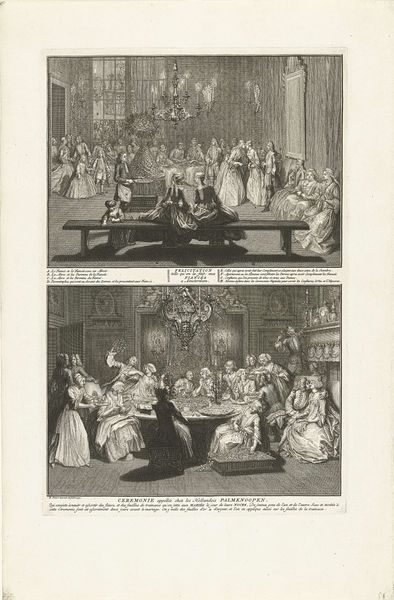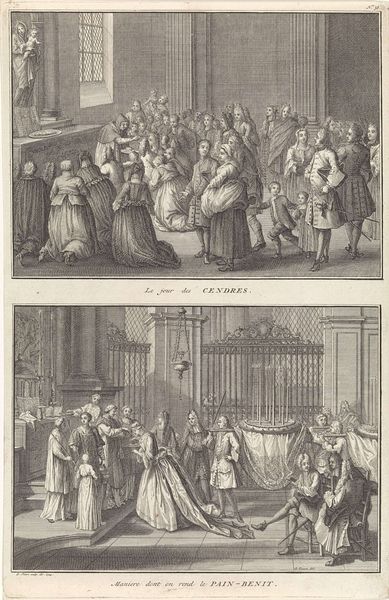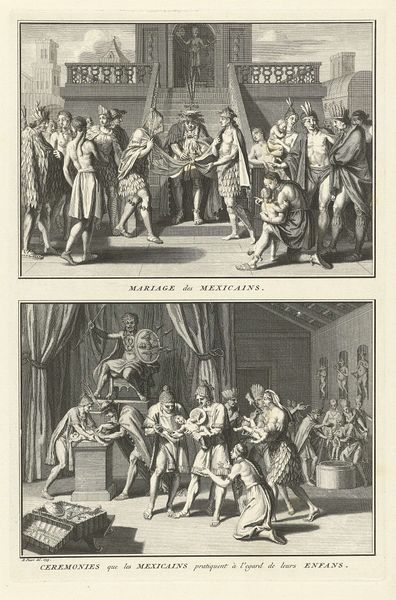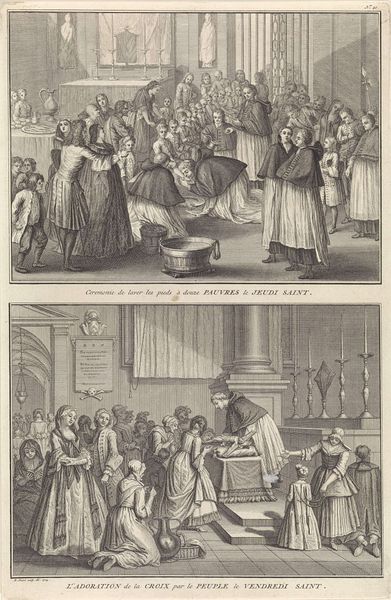
print, engraving
#
baroque
# print
#
genre-painting
#
history-painting
#
engraving
Dimensions: height 340 mm, width 223 mm
Copyright: Rijks Museum: Open Domain
Curator: This print, created by Bernard Picart in 1722, is titled "Communie/ Laatste communie" or "Communion/ Last Communion." It resides here at the Rijksmuseum. Editor: The contrast immediately grabs you. The composition feels a bit stiff, perhaps a consequence of the engraving process itself? It's fascinating how the artist manages to convey such a somber mood within that formal structure. Curator: Absolutely. The two scenes, divided horizontally, are both rife with symbolism. The upper panel illustrates the sacrament of communion, a communal ritual of faith. Editor: And look at the textures—the heavy drapery, the polished floors—everything speaks to a specific economic class and access to material resources during the baroque era. How was Picart connected to that system? Curator: Good question! The work clearly resonates with baroque aesthetics, even as we consider how printmaking made such scenes accessible to wider audiences than painted canvases might. Note the contrast: One panel depicts communion within the presumed safety and sanctity of the church, while the lower presents the last rites administered at a deathbed. Editor: Interesting. So the *making* of this print—engraving, materials, production—mirrors a shift toward accessibility but it’s also still operating inside certain parameters of power. It’s for consumption, but within what social strata? Curator: The imagery is dense with theological implications. The holy Eucharist is central to Catholic faith; a symbolic participation in the sacrifice of Christ, whereas the lower scene features the "viaticum", literally "provision for the way"—referring to the last rites administered before death, offering solace, forgiveness, and passage into the afterlife. Both suggest transformation through ritual, the earthly merging with the divine. Editor: Yes, this speaks to material constraints again, where even the most profound, transformative, "spiritual" experiences are framed, bound, shaped through physical space, objects, cloth, gestures... Do you know for what audience Picart specifically made the prints? Curator: Well, it served devotional functions obviously and it would remind congregants, no matter their status in life, of their collective membership in this holy community. Editor: Food for thought! Examining this image has reinforced how deeply intertwined spirituality and materiality really are, and to see a moment like that represented so carefully... Curator: ...I appreciate how the artist managed to compress weighty concepts of faith, death, and redemption within such ordered frames, capturing fleeting moments of grace.
Comments
No comments
Be the first to comment and join the conversation on the ultimate creative platform.
